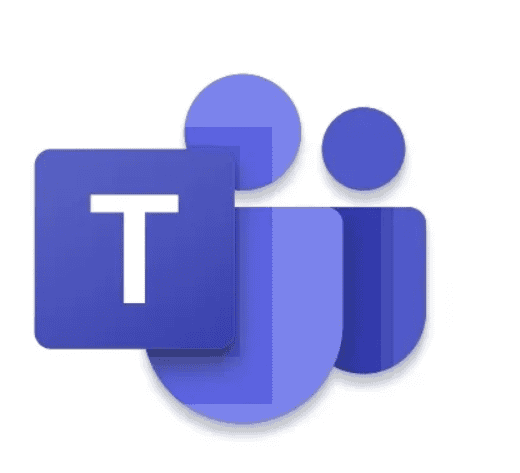Sharepoint and Office 365 has opened up a wide array of possibilities for people to collaborate in a manner like never before. Microsoft Groups have been in existence for a while now and when it launched the Slack killer, Teams, it created confusion for a lot of people. They were skeptical about the need for Microsoft Teams since Office 365 Groups already existed. Are these competitors? If it is, why is Microsoft competing with their own product? Despite all the skepticism, the truth is that these two products are complementary if the users understood properly and that’s what we are trying to highlight in this article.

Microsoft Office 365 Groups
Groups in an Office 365 environment simply means that some Active Directory users get access to some set of tools. These users will also share a mailbox and a calendar for collaboration. When you are trying to understand Groups, what you need to know is that Groups is not an actual product but it is a set of configurations and settings which control access to the existing Microsoft products.
Group creation is more like a backend action which enables different users to collaborate in the front-end as these users get access to multiple tools. These tools could be SharePoint, OneNote, etc. In simple words, when an Office 365 groups are created, little robots set out to work in the backend and gives users in that group access to specific Office 365 products acting as a centralized manager.
A group can be created automatically from any of these Office 365 products such as SharePoint, Planner, Teams, Outlook, PowerBI, etc. and this can be done by anyone in your organization running an Office 365. It is also possible for groups to have both internal owners and external members. External members are called guests (not to be confused with external users in SharePoint). Users and guests are stored in an Active Directory. A certain set of rules or classification can be added to a group and this gets applied to connected products automatically.
Creating Office 365 Groups
Groups can be created in multiple ways. All these are from within Microsoft Office 365 products. The most common way is doing it from Outlook Online and Outlook Desktop apps. When done from outlook, SharePoint site collection, planner, email distribution list, Outlook group calendar, etc are also created along with it.
An Office 365 Group or a communication site can be created from within a SharePoint Home which also creates common attributes like Outlook email distribution List, Outlook group calendars, SharePoint site collection and Planner along with it.
Similarly, Groups can also be created from multiple Microsoft Office 365 Products such as OneDrive, Planner, PowerBI, Stream, Yammer, HubSite, New SharePoint admin center, Office 365 Admin Center, Exchange Admin Center, Azure Active Directory Admin Center, Dynamics, PowerShell, and Flow. All these methods create a set of common attributes with it that is required to run the service.
Now the question is whether we can create Groups from within Microsoft Teams? The answer is yes. With the above options when the groups were created, there was no relation to Teams whatsoever. But when a new Team is created, an Office 365 Group is created along with it and all its associated attributes get linked to that Team (Outlook group calendar, Outlook email distribution List, SharePoint site collection, Planner, Teams).
Microsoft Teams
Microsoft Teams is more like Slack, it lets you chat with your team and enhance ways to collaborate. It was introduced when Slack was gaining prominence and Skype for Business was slowly losing its market share. In 2019, Microsoft Teams officially overtook the number of Slack users by 13 million daily active users as per the latest reports.
Threaded group chat rooms, private conversations, etc are supported and even communication can be done via video calls. It also enables online meetings, file sharing, and task sharing. All these are available in a single interface. Since Microsoft apps are widely used, integrating third-party apps into Teams is also a piece of cake.
Teams, by giving your team a digital workspace to collaborate effectively in the cloud, is a seamless alternative for the employees to be productive as compared to the email (Outlook) which was being used frequently before. This is a huge advantage and a productivity hike, especially for enterprise users. Teams also come with an inbuilt AI support which helps in translating in a multilingual team.
The AI is so good that if you missed a meeting, you can search for a keyword and access that part of the video in which your word of interest was used.
By creating channels, specific topics can be categorized and the members can act on it. In the Office 365 environments, this was previously done by emails by managing everything in a single inbox by conversing in email loops.
When new members are added to a team, the whole conversation is there for them to catch up and the onboarding process makes it easier for team members to get into the action faster. A chat room approach gives the organization better control of the team members even when they are working remotely.
Office 365 Groups vs Teams
To avoid such a scenario, there is Join or create a team button on the lower-left corner of the Teams app in which a snapshot of the existing Public Teams can be seen. Search is also possible here. If a Team with the required name is present, you can join that team.
If a Team doesn’t exist, it can be created in two ways ie building from scratch and doing it from an existing Office 365 Groups. Which is opposite to what we had mentioned previously that Groups can be created from within a Team which is true as well as Groups work more like backend settings that get created when the Teams or any Office 365 products are set up.
Building from scratch is simple and can be done directly and access levels can be set up as Public, Private and Org-wide. Public means that anyone can search for the Team name and join it whereas Private Teams can only be joined by invitations. In the Org-wide teams, all the employees in an organization will be added automatically.
To create from an already existing Office 365 Team or Groups, search for an existing group and link it while creation which would automatically apply the existing group’s settings and accesses to the new Team created.
Channels
Channels feature inside Teams is the core of the whole interface. General Channels is what every team starts with. The members get added automatically to this channel when they join. The members can create new channels as required and give them any names that they like, for example, the project name that the team is working on.
Channels are more like chat rooms where real conversations happen. Being in the cloud backs up the conversations for future references. Files sharing, calendar management, group video calls, etc can all be managed from within the channel.
Channels can also be linked to emails thereby receiving the email content and attachments from the email directly to the channel. Emails can also be replied from within the channel or an attachment can be forwarded. Inside a channel, the email will be just another conversation just like the conversation from a real colleague. Some other features available are the Following channels, Mentioning inside channels, Conversations and Files. Following is simply signing up for updates and you get notifications on activities of that channel.
Mentioning can be done just like mentioning on Twitter by using ‘@name’ which sends notifications to the person mentioned. @Channel and @Teams can be used as well. Conversations are chats which could be one to one or inside a channel. Emoticons, Gifs, etc can be used to make the chat more lively and real-world like.
Files list all the files available with each channel getting in its folder which is stored in SharePoint. The user can either use the files from SharePoint or directly from within Teams. Tabs is another feature available within Teams which is more like your tiny workspace within Teams. Conversations, Files, and Wiki are the tabs available by default. There is also an ability to add a document to a tab and work on it.
About the Author
Anto Rubin is a Sr. Technical Product Manager at ClaySys Technologies. He works closely with Microsoft products and technologies, figuring out how they can be leveraged in supporting enterprises for their software development requirements.










